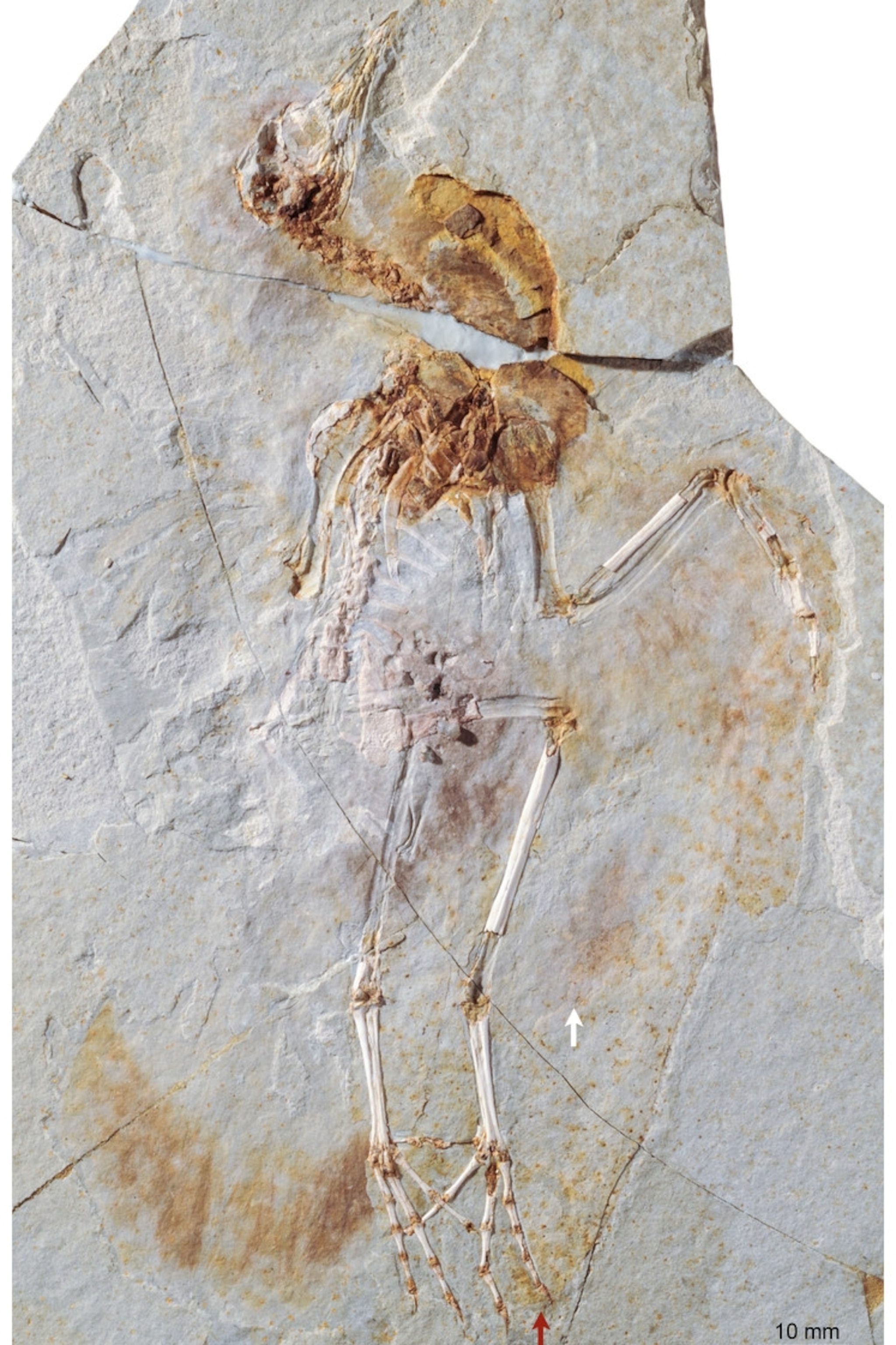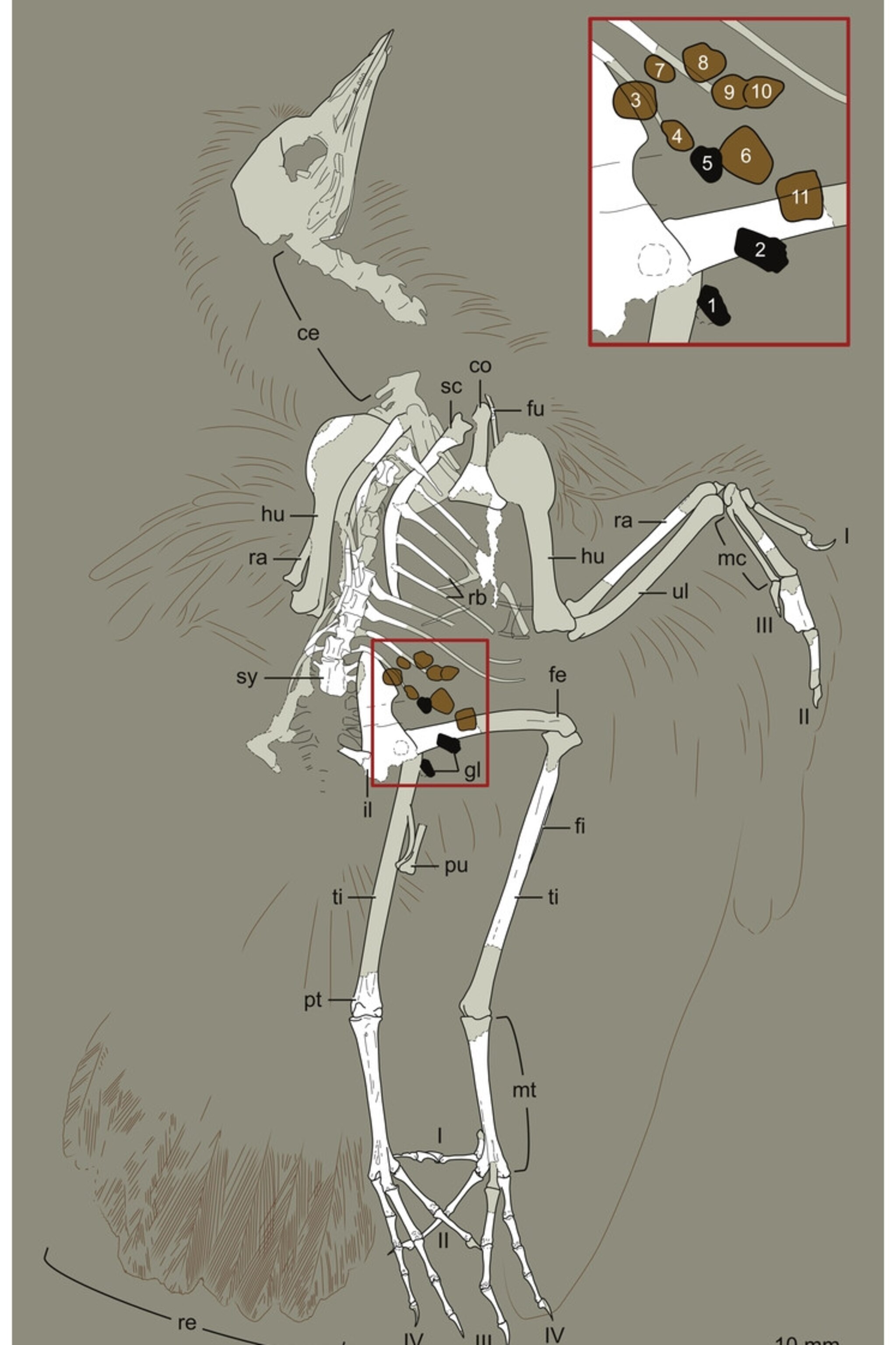Birds are dinosaurs. That fact, once shocking, is now familiar and easily seen as living birds strut and flap about. Yet it’s easy to forget just how long avian dinosaurs have been around, and how quickly they evolved into feathery foreshadowings of living birds. A newly-described specimen of Hongshanornis longicresta, a roughly 125 million year old bird found in China, helps illustrate how quickly early birds evolved habits that we can still see in avian dinosaurs today.
Who the earliest bird actually was is a point of contention. That title has traditionally been held by the roughly 150 million year old Archaeopteryx, and, for some, the classic “urvogel” defines that elusive point where non-avian dinosaurs end and avian dinosaurs begin. Other experts disagree about the placement of Archaeopteryx and point to other candidates, such as the 160 million year old Anchiornis, as marking the beginnings of birds. The science isn’t set in stone yet. But the point is that by about 150 million years ago there were small, feathery theropod dinosaurs that set the ancestral body plan for an evolutionary flourishing of birds through the rest of the Mesozoic.

Hongshanornis was part of this radiation, an Early Cretaceous bird that belonged to a subgroup called the ornithuromorphs. The avian was an early member of a large, persistent group that includes modern birds today. And while Hongshanornis was first named in 2005, a new specimen described by Luis Chiappe and colleagues contains some Cretaceous clues not previously seen.
The first specimen of Hongshanornis was a mold of the skeleton preserved on two slabs. Only the voids where the bones once were and a smattering of feathers remained. But the new fossil preserves actual bone in addition to the spaces where the skeleton has disappeared. Whereas Hongshanornis was thought to be toothless based on the holotype, for example, the newly-described specimen has impressions of small, rounded teeth at the front of the upper and lower jaws. Along with thumb claws, the teeth of this bird were a persistent remnant of dinosaurian ancestry.

What was Hongshanornis using those teeth to grip? Stomach stones offer a clue. Around the fossil bird’s pelvis sits a cluster of gastroliths – intentionally-swallowed pebbles that would have helped grind hard food. Since another Hongshanornis was preserved with a last meal of seeds preserved inside, Chiappe and colleagues suggest, the early bird probably plucked up hard foods that the gizzard stones broke down. Birds can’t chew, and such stones process their meals for them.
Despite the teeth and claws, though, Hongshanornis looked and flew very much like small birds that flit about today. The Cretaceous avian was about the size of a cowbird or an oriole, and had broad, long wings with a fan-shaped set of tail feathers. Pairing those traces of feathers with skeletal anatomy, flight expert Michael Habib and coauthors figured out that Hongshanornis had wings much like those of a common starling. With such a wing shape, Hongshanornis likely flew in a manner similar to many small extant birds – flapping continuously at slow speeds, but alternating between flapping and flexing the wings at higher speeds. Consider that the next time you see a songbird flap-bounding through the air, continuing an aerodynamic tradition that goes back to the height of the Age of Dinosaurs.
References:
Chiappe, L., Bo, Z., O’Connor, J., Chunling, G., Xuri, W., Habib, M., Marguan-Lobon, J., Qingjin, M., Xiaodong, C. 2014. A new specimen of the Early Cretaceous bird Hongshanornis longicresta: insights into the aerodynamics and diet of a basal ornithuromorphA new specimen of the Early Cretaceous bird Hongshanornis longicresta: insights into the aerodynamics and diet of a basal ornithuromorphA new specimen of the Early Cretaceous bird Hongshanornis longicresta: insights into the aerodynamics and diet of a basal ornithuromorph. PeerJ. 2:e234; DOI 10.7717/peerj.234
Related Topics
Go Further
Animals
- Octopuses have a lot of secrets. Can you guess 8 of them?
- Animals
- Feature
Octopuses have a lot of secrets. Can you guess 8 of them? - This biologist and her rescue dog help protect bears in the AndesThis biologist and her rescue dog help protect bears in the Andes
- An octopus invited this writer into her tank—and her secret worldAn octopus invited this writer into her tank—and her secret world
- Peace-loving bonobos are more aggressive than we thoughtPeace-loving bonobos are more aggressive than we thought
Environment
- Listen to 30 years of climate change transformed into haunting musicListen to 30 years of climate change transformed into haunting music
- This ancient society tried to stop El Niño—with child sacrificeThis ancient society tried to stop El Niño—with child sacrifice
- U.S. plans to clean its drinking water. What does that mean?U.S. plans to clean its drinking water. What does that mean?
- Food systems: supporting the triangle of food security, Video Story
- Paid Content
Food systems: supporting the triangle of food security - Will we ever solve the mystery of the Mima mounds?Will we ever solve the mystery of the Mima mounds?
History & Culture
- Strange clues in a Maya temple reveal a fiery political dramaStrange clues in a Maya temple reveal a fiery political drama
- How technology is revealing secrets in these ancient scrollsHow technology is revealing secrets in these ancient scrolls
- Pilgrimages aren’t just spiritual anymore. They’re a workout.Pilgrimages aren’t just spiritual anymore. They’re a workout.
- This ancient society tried to stop El Niño—with child sacrificeThis ancient society tried to stop El Niño—with child sacrifice
- This ancient cure was just revived in a lab. Does it work?This ancient cure was just revived in a lab. Does it work?
Science
- The unexpected health benefits of Ozempic and MounjaroThe unexpected health benefits of Ozempic and Mounjaro
- Do you have an inner monologue? Here’s what it reveals about you.Do you have an inner monologue? Here’s what it reveals about you.
- Jupiter’s volcanic moon Io has been erupting for billions of yearsJupiter’s volcanic moon Io has been erupting for billions of years
- This 80-foot-long sea monster was the killer whale of its timeThis 80-foot-long sea monster was the killer whale of its time
Travel
- How nanobreweries are shaking up Portland's beer sceneHow nanobreweries are shaking up Portland's beer scene
- How to plan an epic summer trip to a national parkHow to plan an epic summer trip to a national park
- This town is the Alps' first European Capital of CultureThis town is the Alps' first European Capital of Culture
- This royal city lies in the shadow of Kuala LumpurThis royal city lies in the shadow of Kuala Lumpur
